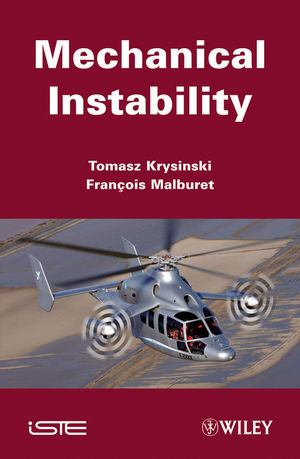
Mechanical Instability
ISTE Ltd and John Wiley & Sons Inc (Verlag)
978-1-84821-201-5 (ISBN)
This book presents a study of the stability of mechanical systems, i.e. their free response when they are removed from their position of equilibrium after a temporary disturbance. After reviewing the main analytical methods of the dynamical stability of systems, it highlights the fundamental difference in nature between the phenomena of forced resonance vibration of mechanical systems subjected to an imposed excitation and instabilities that characterize their free response. It specifically develops instabilities arising from the rotor–structure coupling, instability of control systems, the self-sustained instabilities associated with the presence of internal damping and instabilities related to the fluid–structure coupling for fixed and rotating structures. For an original approach following the analysis of instability phenomena, the book provides examples of solutions obtained by passive or active methods.
Thomas Krysinski, Consultant. François Malburet, ENSAM, Aix-en-Provence, France.
Foreword ix
Philippe ROESCH
Preface xiii
Chapter 1. Notions of Instability 1
1.1. Introduction 1
1.1.1. Lyapunov’s Direct Method 3
1.1.2. Lyapunov’s Indirect Method 5
1.2. Comparison of Notions of Resonance and Instability 8
1.2.1. Notion of Resonance 8
1.2.2. Notion of Instability 22
1.3. Instability Due to Self-Sustained Excitation 23
1.3.1. Multiple-Degree-of-Freedom Systems 24
1.3.2. Single-Degree-of-Freedom System 46
1.4. Parametric Instability 54
1.4.1. General Case 54
1.4.2. Mathieu’s Equation 54
1.4.3. Typical Application 57
1.5. Summary of Methods Used to Ensure or Increase the Stability of a System 60
1.5.1. Notion of Degrees of Stability 60
1.5.2. Main Corrector Systems 67
Chapter 2. Rotor/Structure Coupling: Examples of Ground Resonance and Air Resonance 91
2.1. Introduction to Ground Resonance 91
2.2. Ground Resonance Modeling 99
2.2.1. Minimum Degree-of-Freedom Model 99
2.2.2. Stability Criteria 110
2.2.3. Energy Analysis 113
2.3. Active Control of Ground Resonance 115
2.3.1. Active Control Algorithm 115
2.3.2. Performance Indicators 135
2.3.3. Implementation of Active Control 137
2.4. Air Resonance 143
2.4.1. Phenomenon Description 143
2.4.2. Modeling and Setting Up Equations 144
2.4.3. Active Control of Air Resonance 149
Chapter 3. Torsional System: Instability of Closed-Loop Systems 153
3.1. Introduction 153
3.2. Governing Principle 153
3.2.1. History and Sizing of Flyball Governor 154
3.2.2. Simple Mathematical Sizing Criterion 155
3.2.3. Physical Analysis of Criterion and Effect of Parameters 164
3.3. Industrial Cases 168
3.3.1. Case of Airplane With Variable-Setting Angle Propeller Rotor 168
3.3.2. Case of Tiltrotor Aircraft 175
3.3.3. Case of Helicopter 176
Chapter 4. Self-Sustaining Instability for Rotating Shafts 201
4.1. Introduction to Self-Sustaining Instability 201
4.2. Modeling of Effect of Internal Damping on Rotating Systems 206
4.2.1. Instability Origins 206
4.2.2. Highlighting Instability 207
4.2.3. Stability Criterion for a Flexible Shaft 222
Chapter 5. Fluid-Structure Interaction 245
5.1. Introduction 245
5.1.1. Fluid-Structure Interaction Issues 245
5.1.2. Instability and Energy Analysis 246
5.1.3. Brief Description of Flutter 248
5.2. Flutter of an Airfoil in an Airstream 250
5.2.1. Setting Up Equations 252
5.2.2. Industrial Examples 259
5.3. Whirl Flutter 312
5.3.1. Introduction to Convertible Aircraft Case 313
5.3.2. Enhanced Convertible Aircraft Rotor Reed’s Modeling – Stability 315
5.3.3. Whirl Flutter Active Control: Case of Tilt Rotor 326
Bibliography 335
Index 339
| Verlagsort | London |
|---|---|
| Sprache | englisch |
| Maße | 163 x 241 mm |
| Gewicht | 667 g |
| Themenwelt | Naturwissenschaften ► Chemie |
| Naturwissenschaften ► Physik / Astronomie ► Mechanik | |
| Technik ► Maschinenbau | |
| ISBN-10 | 1-84821-201-1 / 1848212011 |
| ISBN-13 | 978-1-84821-201-5 / 9781848212015 |
| Zustand | Neuware |
| Haben Sie eine Frage zum Produkt? |
aus dem Bereich


